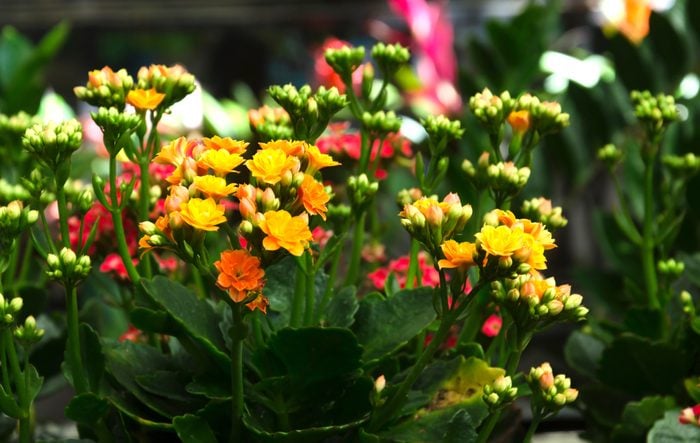
Kalanchoe
Kalanchoe blossfeldiana, Zones 10 to 12
Pronounced “ka-lun-KOH-ee,” kalanchoe is a short-day plant, meaning it blossoms in late winter after experiencing 6 to 11 weeks of long nights with about 14 to 16 hours of complete darkness.
Why we love it: Kalanchoe’s clustered florets last for months with very little care. You’ll often find them for sale in your grocery store’s floral section when they’re in season.
Learn how to grow and care for kalanchoe, indoors and outdoors.
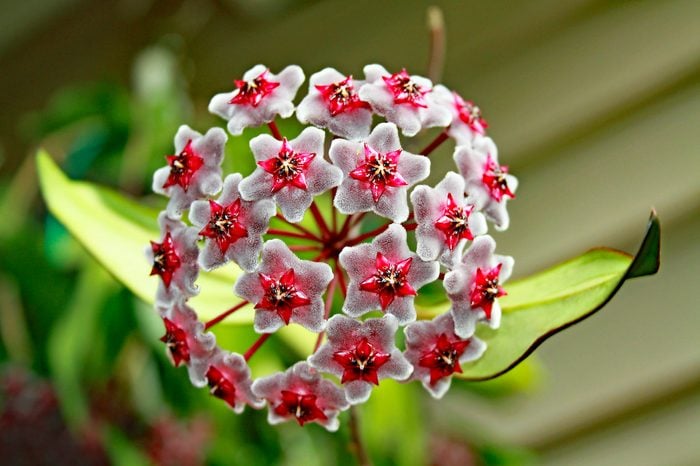
Hoya
Hoya spp., Zones 10 to 12
Hoyas have thick, pliable leaves that inspire its common name, wax plant. It’s considered one of the easiest of the indoor plants to care for, needing only bright indirect light and infrequent watering.
Why we love it: The foliage is attractive, but the clusters of sweetly fragrant blooms really set these flowering succulents apart. Older plants, ones at least 5 years old with long stems, are more likely to bloom.
You’ll love these adorable bunny succulents and dolphin succulents.
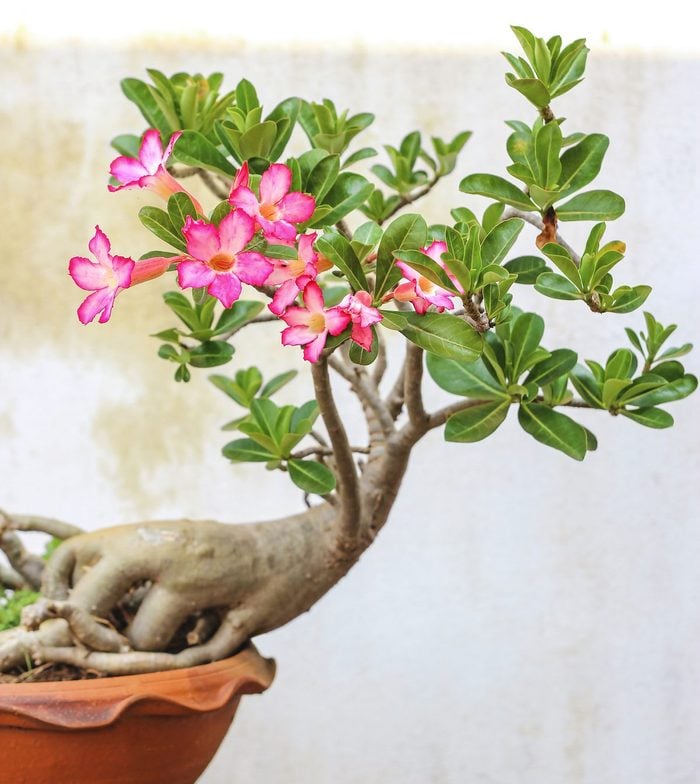
Desert Rose
Adenium obesium, Zones 10 to 12
Though it looks like a bottom-heavy bonsai tree, desert rose is a succulent that stores water in its bulbous trunk. Water frequently in spring and summer, but ease up in cooler months. It prefers dry conditions as it goes dormant.
Why we love it: The large bloom clusters evoke a tropical feel, and its cute chubby trunk gives the plant year-round interest.
Learn everything you need to know about a desert rose plant.
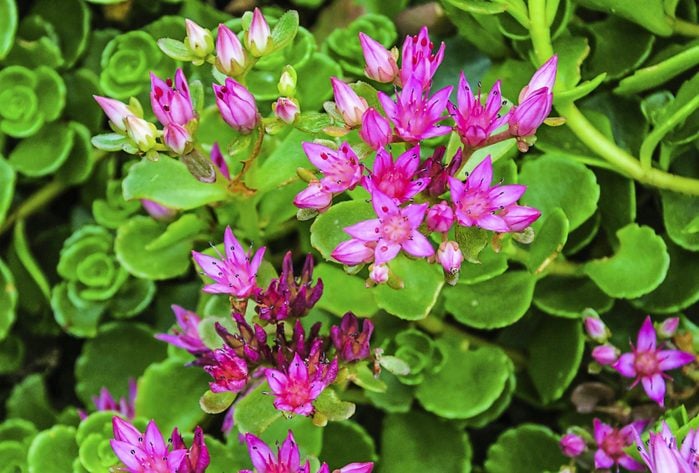
Stonecrop
Sedum spp., Zones 4 to 9
Probably the most common outdoor flowering succulents in temperate zones due to their ability to withstand harsh temperatures, sedums thrive in poor soils
and rock gardens while putting out oodles of color.
Why we love it: The deservedly popular Autumn Joy has an upright growth habit and boasts outstanding fall blooms that bring in late-season butterflies.
Did you know—some succulents attract pollinators.
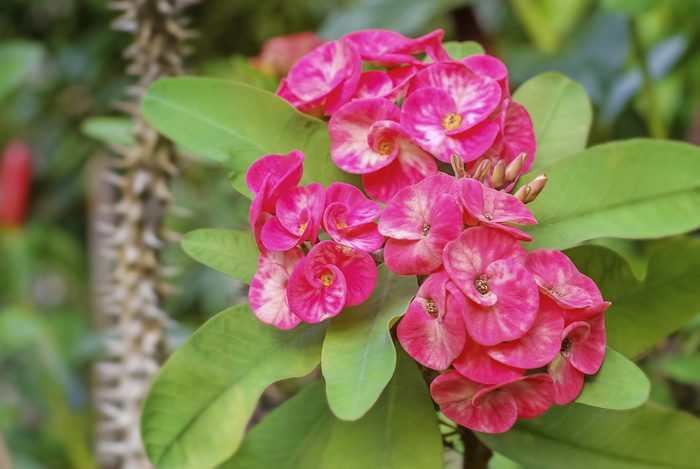
Crown of Thorns
Euphorbia milii, Zones 9 to 11
This prickly plant with irritating sap is a little difficult to love, but the brilliant color it produces for months on end makes it worthwhile. Luckily, it needs little care, so you won’t have to deal with the thorny stems often.
Why we love it: Crown of thorns has been widely hybridized, so look for new varieties with bright yellow, peach, pink and white blooms along with the traditional red-flowering types.
Like flowering succulents? These perfectly pink succulents will add rosy color to your home.
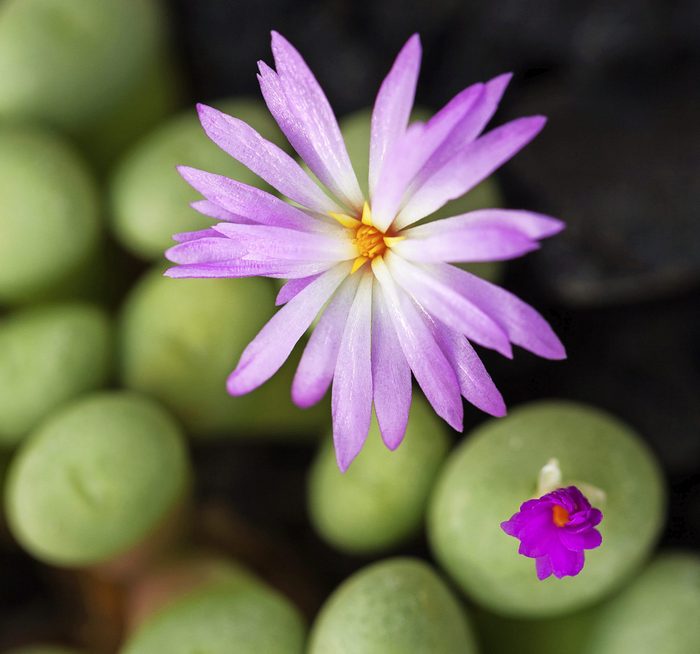
Living Stone
Lithops spp., Zones 10 to 11
An ideal houseplant, this bizarre plant from southern Africa needs to be seen up close to be appreciated. Keep living stone nearly bone-dry and give it as much sun as you can to mimic its native sandy and rocky environment.
Why we love it: For much of the year, lithops looks strikingly like a stone. Occasionally, the rock seems to split, throwing out charming daisy-like blossoms.
Learn 7 surprising facts about succulents.
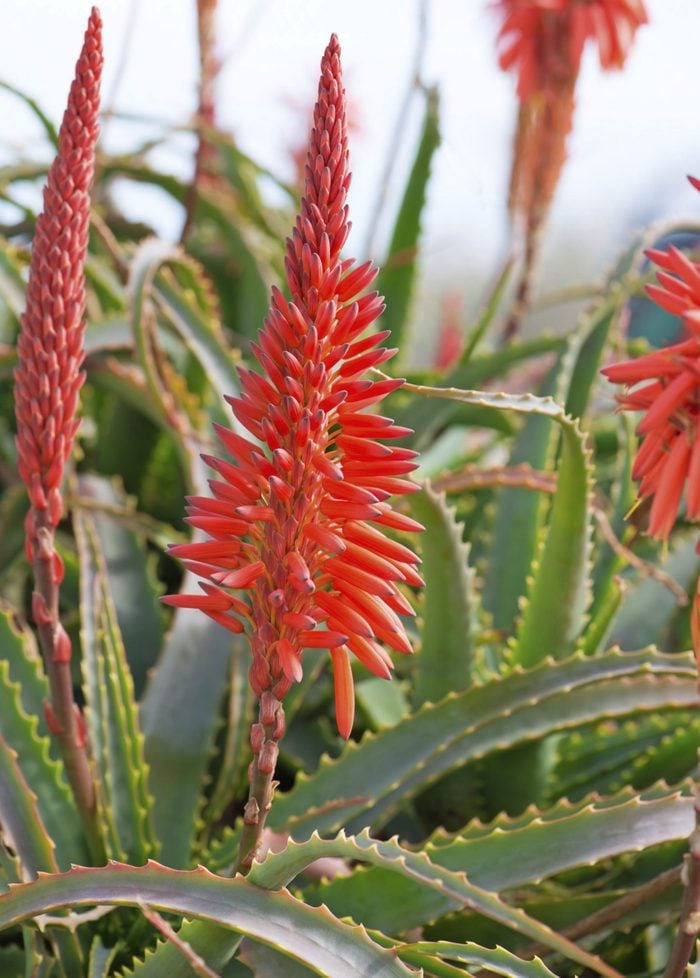
Aloe Vera
Aloe spp., Zones 9 to 11
Many people probably don’t realize this familiar plant produces a brilliant flower spike. In warm climates, aloe flowers freely and attracts hummingbirds.
Why we love it: For generations, cooks have kept a pot of aloe vera on the kitchen windowsill for soothing burns. Encourage these houseplants to bloom with drier soil, cooler temperatures and bright light.
Here’s why aloe is a perfect plant for a drought-tolerant garden.
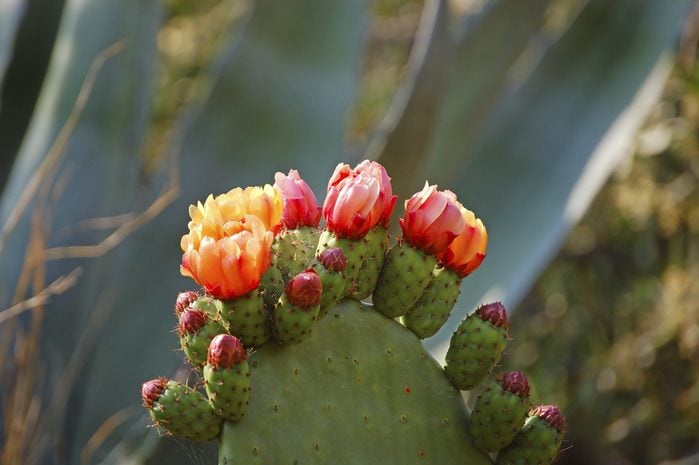
Prickly Pear Cactus
Opuntia spp., Zones 2 to 10
Prickly pear is native to the Americas, where it’s a familiar sight in the South and West, though some species are cold hardy and grow well outside as far north as Canada.
Why we love it: Vivid red, yellow, orange and pink cactus flowers mature into a delicious fruit with a light, sweet flavor reminiscent of melon.
Psst—here’s what I wish I knew before planting my succulent garden.
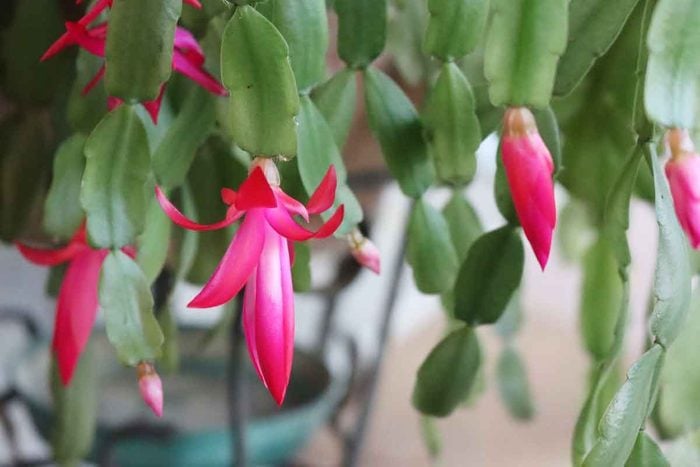
Holiday Cactus
Schlumbergera spp., Zones 9 to 11
Many adore Christmas cactus and Thanksgiving cactus (also known as holiday cactus). They’re simple to care for and bring to bloom. Like kalanchoe, they are short-day plants, so let these cactuses enjoy long dark nights each fall to start the process.
Why we love it: This one of our flowering succulents is easy to share. Take a cutting and allow it to dry for a day or two, then press it into moist soil to root.
These 10 seriously cool succulents make great houseplants.
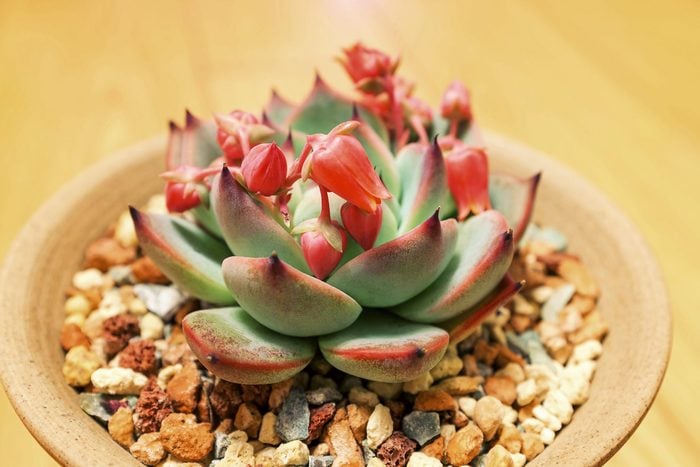
Echeveria
Echeveria spp., Zones 8 to 11
These sun-loving beauties throw up tall cascades of bell-shaped blossoms on arching stems. They offset regularly, filling a pot and flowing over the edges with colorful, fleshy leaves.
Why we love it: Even before they flower, the lovely rosettes of echeveria foliage are decorative on their own. Colors range from blue and green to pink and peach.
Next, check out the top 10 colorful succulents you should grow.
